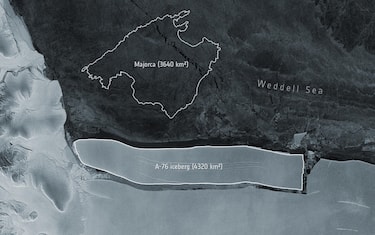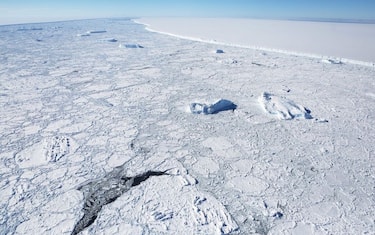Si tratta del secondo grande distacco avvenuto dalla piattaforma di ghiaccio Brunt negli ultimi due anni, per effetto della rapida crescita delle fratture che si sono estese lungo l’intera piattaforma
Un gigantesco iceberg delle dimensioni di 1.550 chilometri quadrati, all’incirca grande quanto Londra, si è staccato dall'Antartide, vicino alla stazione di ricerca britannica Halley. I sensori sulla superficie della Brunt Ice Shelf hanno confermato la spaccatura nella tarda serata di domenica GMT. Attualmente, 21 membri dello staff sono a Halley, non sono in pericolo e stanno mantenendo la base e gestendo gli strumenti scientifici. La rottura ha avuto luogo domenica 22 gennaio tra le 19:00 e le 20:UTC, durante una marea primaverile.
L'evento non è legato al cambiamento climatico
Il nuovo iceberg, spiega la British Antarctic Survey (BAS), l’istituto di ricerca polare del Regno Unito, si è formato lungo la crepa nota come Chasm-1. “Questo evento di parto era previsto e fa parte del comportamento naturale della piattaforma di ghiaccio Brunt – ha affermato il professor Dominic Hodgson – . Non è legato al cambiamento climatico. I nostri team scientifici e operativi continueranno a monitorare la piattaforma in tempo reale per garantire che sia sicura”. Un berg di dimensioni simili, noto come A74, si era staccato nel febbraio 2021 più a est. Gli scienziati monitorano continuamente eventuali crepe importanti nel Brunt. Gli ultimi anni avevano visto la propagazione del Chasm One accelerare, con conseguente separazione completa di un blocco di ghiaccio spesso circa 150-200 metri.

vedi anche
Il più grande iceberg del mondo si è staccato dall'Antartide
Ricerca di equilibrio
Il distacco di grandi bergs può portare ad un'accelerazione del flusso del ghiaccio. Prima il Brunt scorreva verso ovest ad una velocità di circa 3 m / giorno. Ora potrebbe subire un'accelerazione, che potrebbe influenzare il comportamento di altre crepe nell'area. In particolare, gli scienziati stanno osservando molto da vicino una fessura che chiamano Halloween Crack. Il distacco dei berg sul bordo anteriore di una piattaforma di ghiaccio è un comportamento molto naturale. La piattaforma ama mantenere un equilibrio e l'espulsione di berg è un modo per bilanciare l'accumulo di nevicate e l'ingresso di più ghiaccio dai ghiacciai di alimentazione sulla terraferma.


)

)
)
)
)